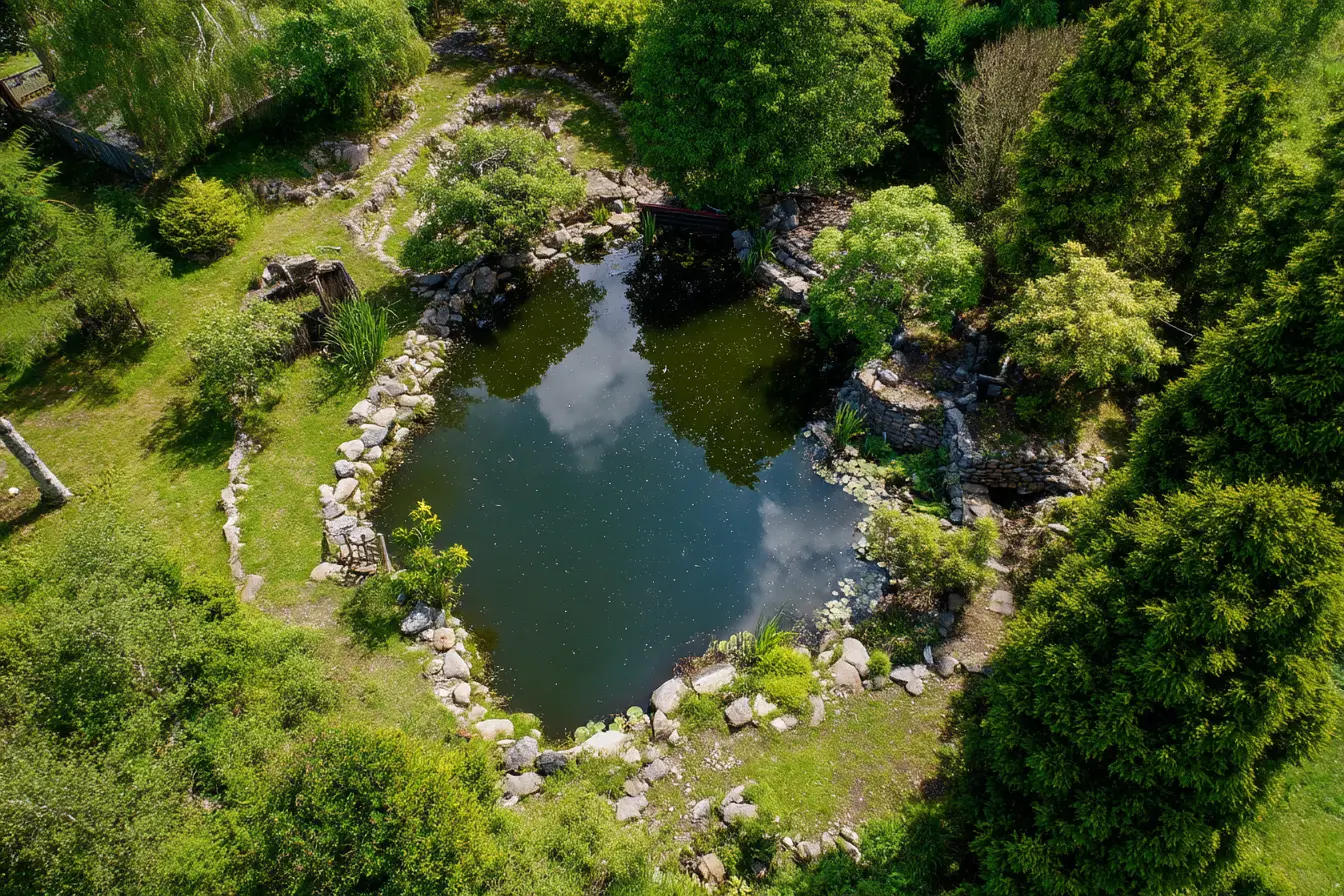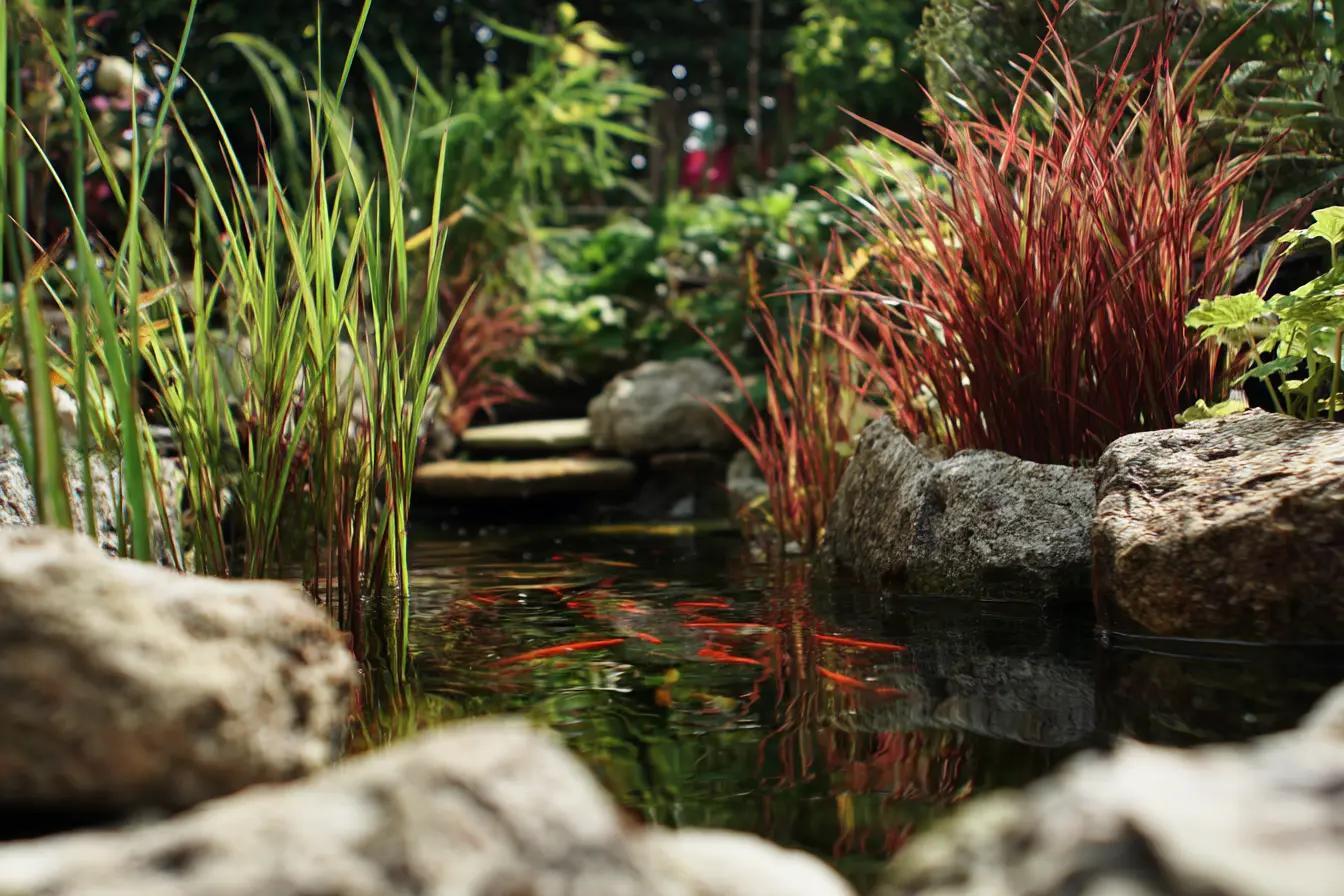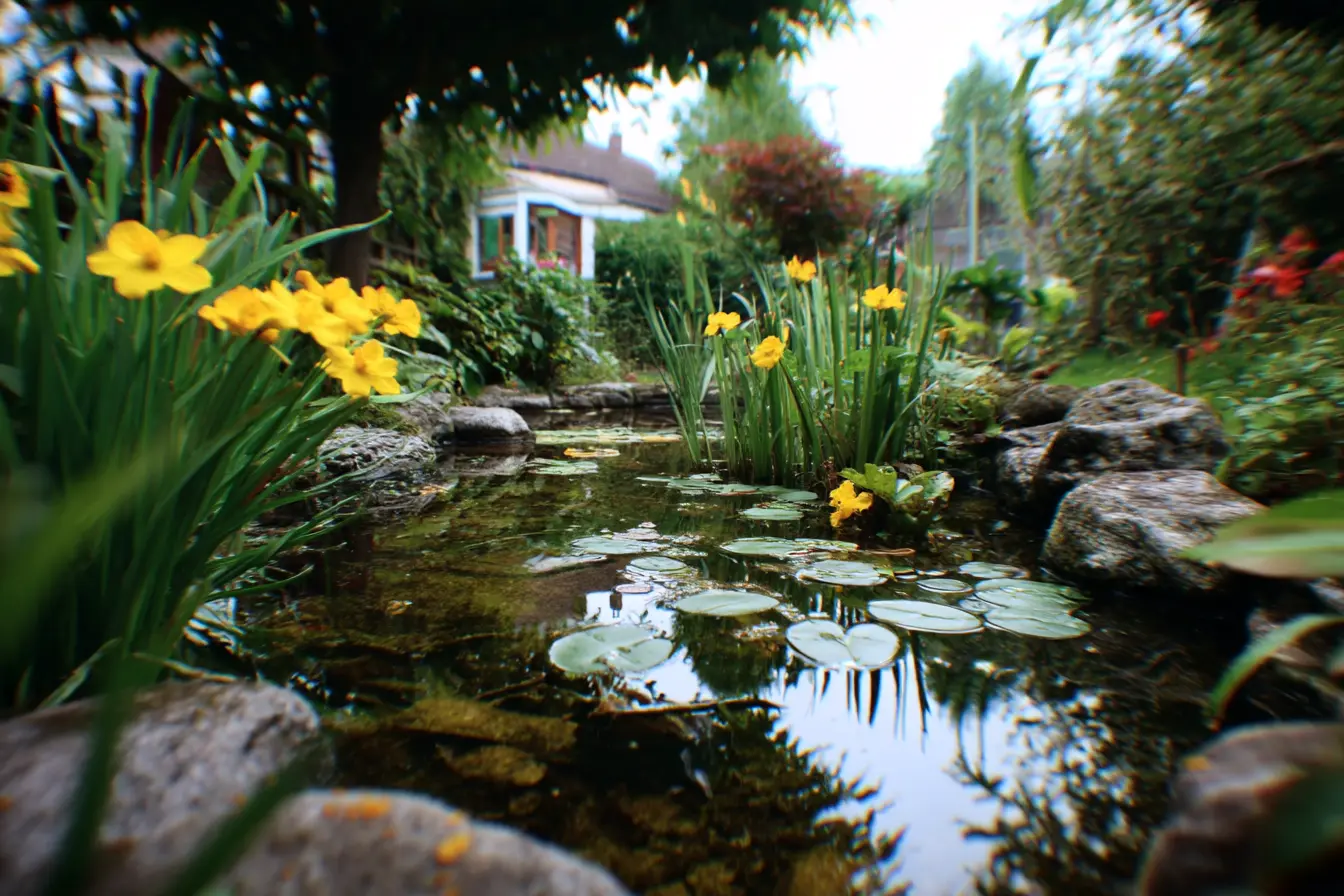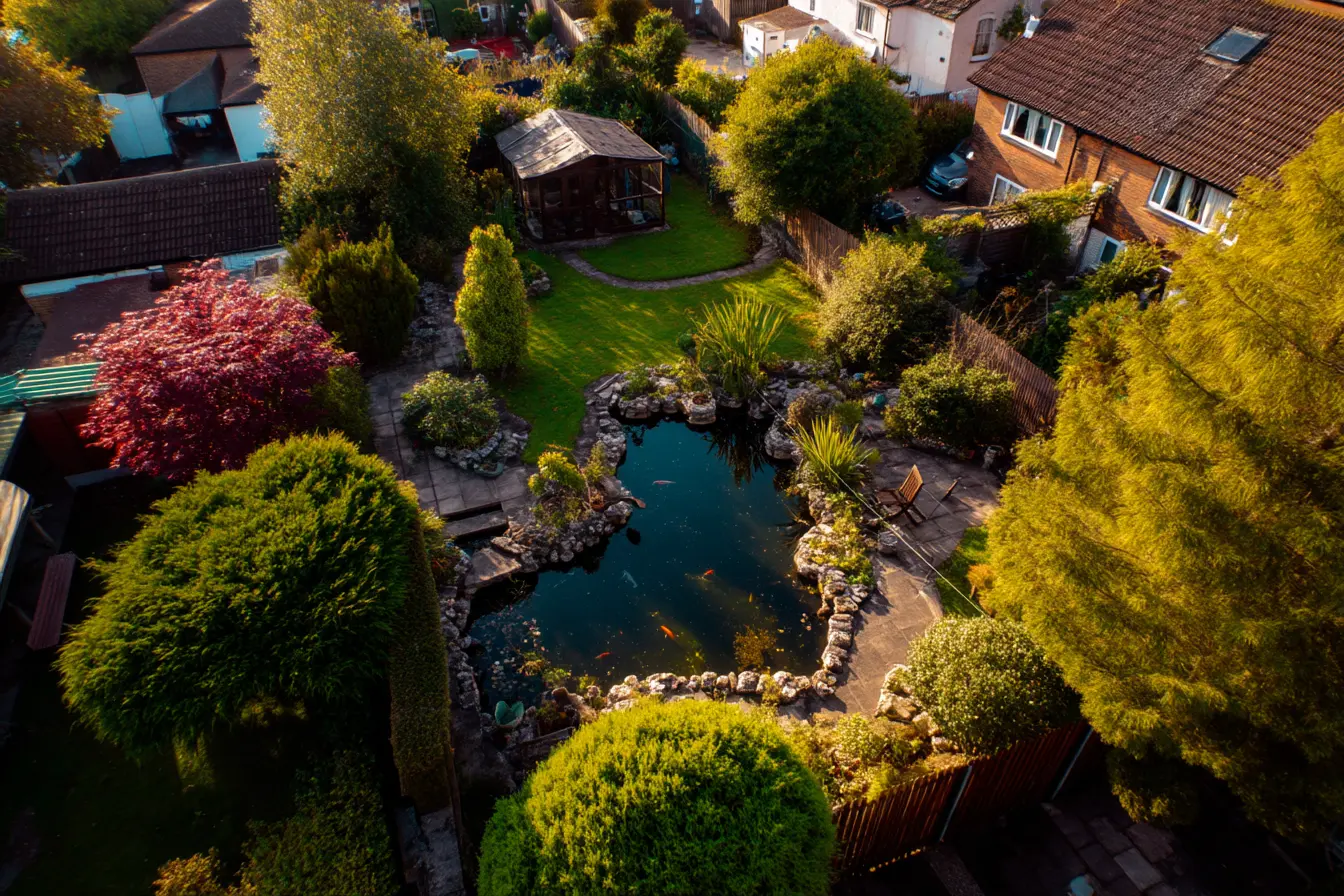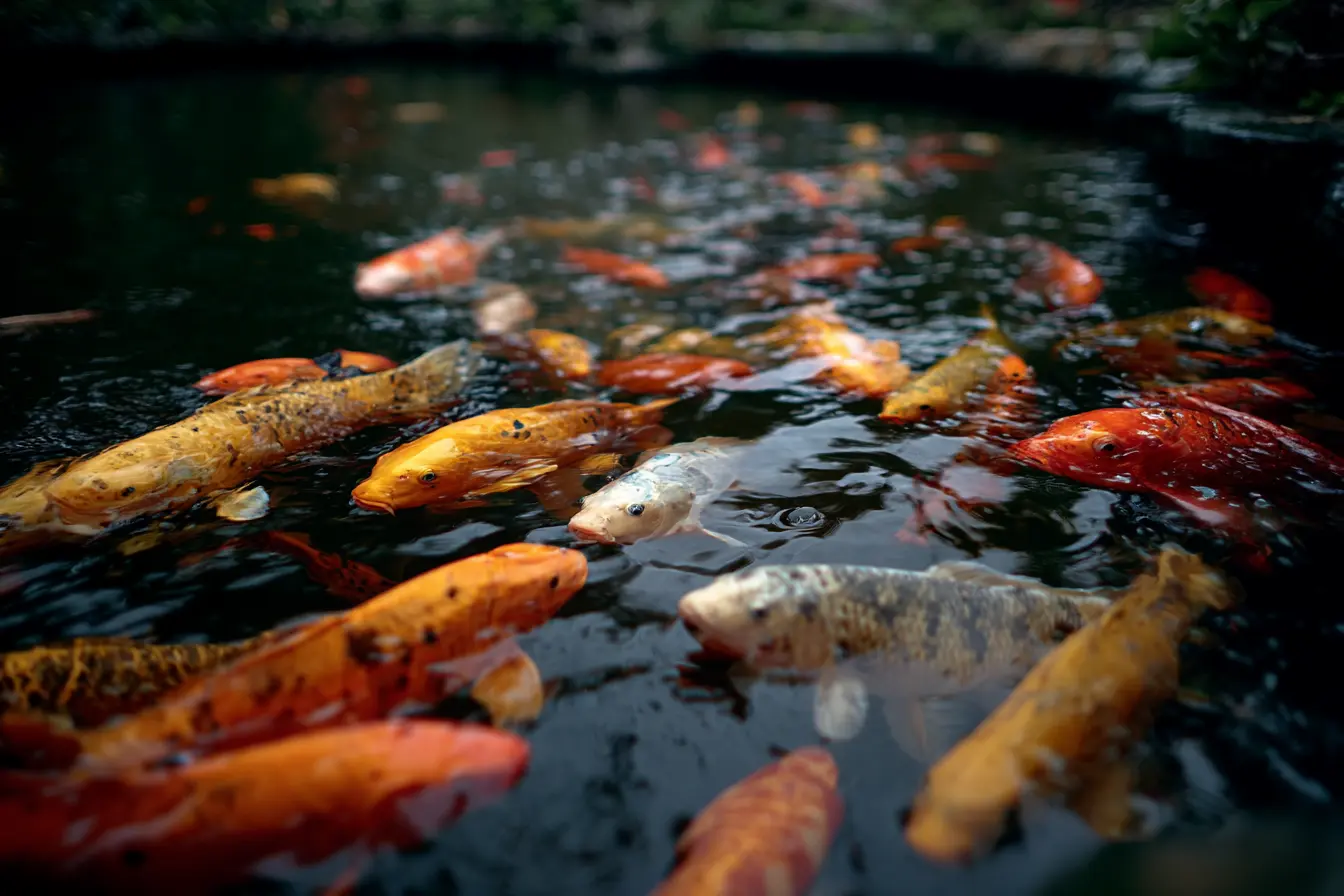
Choosing Fish for a Decorative Garden Pond
A decorative garden pond is brought to life by the gentle movement and shimmering colours of fish. Choosing the right fish is not just about appearance — it's also about ensuring compatibility with your pond’s size, environment, and filtration system. A well-stocked pond can provide a soothing, ever-changing focal point in your garden.
This guide will take you through everything you need to know when selecting and caring for fish in a decorative pond.
Benefits of Keeping Fish in a Pond
- Aesthetic appeal: Vibrant colours and graceful swimming patterns enhance your garden’s beauty.
- Pest control: Fish eat mosquito larvae and some algae.
- Educational value: Great for teaching children about aquatic life.
- Relaxation: Watching fish is proven to reduce stress and promote calmness.
Key Considerations Before Choosing Fish
Pond Size and Depth
- Goldfish: Minimum pond depth of 60 cm.
- Koi carp: Require a minimum of 1–1.2 metres for adequate swimming space and winter survival.
- General guide: The larger the fish, the more space and water volume you'll need.
Avoid overcrowding — an overstocked pond leads to poor water quality and stressed fish.
Filtration and Aeration
Fish produce waste that must be broken down by beneficial bacteria and removed via filtration. A proper setup includes:
- Mechanical filter: Traps solid waste
- Biological filter: Processes ammonia and nitrite
- UV clarifier: Helps prevent green water
- Pump: Circulates water and powers the filter
- Air pump or fountain: Increases oxygen levels
The system must be matched to your pond volume and fish load.
Water Quality
Maintain stable, clean water by regularly testing:
- Ammonia
- Nitrites
- Nitrates
- pH (ideally 7.0–8.0)
Use a dechlorinator when adding tap water, and ensure your pond is fully cycled before introducing fish.
Popular Fish Species for Decorative Ponds
Goldfish (Carassius auratus)
Goldfish are hardy, colourful, and come in many varieties, making them ideal for beginner pondkeepers.
Types:
- Common goldfish: Simple orange or red, very robust.
- Shubunkins: Calico colours with a sleek body.
- Comets: Longer tails, faster swimmers.
- Fantails: More delicate, best for calm ponds with little competition.
Pros:
- Tolerant of temperature fluctuations
- Easy to care for
- Suitable for small to medium ponds
Koi Carp (Cyprinus carpio)
Koi are the stars of ornamental ponds, known for their size, striking patterns, and intelligent behaviour.
Pros:
- Grow large and live long (often over 20 years)
- Very interactive — may eat from your hand
- Available in dozens of colours and markings
Cons:
- Require large, deep ponds
- Produce significant waste
- Can uproot plants — choose hardy or protected vegetation
Tip: Only keep koi in ponds over 4,000 litres with strong filtration.
Orfe (Leuciscus idus)
Fast-swimming, active fish best kept in groups.
Types:
- Golden orfe: Bright orange/golden in colour
Pros:
- Schooling behaviour adds life to the pond
- Good companion for goldfish
- Active and interesting to watch
Cons:
- Need oxygen-rich water
- Not suitable for very small or shallow ponds
Tench (Tinca tinca)
A bottom-dwelling fish with a reputation for keeping water clean.
Types:
- Golden tench: Attractive pale yellow or golden variation
Pros:
- Peaceful and hardy
- Helps control debris on the pond floor
Cons:
- Less visible as they spend time near the bottom
- Can stir up sediment if overstocked
Other Options
- Rosy red minnows: Small, active, good for smaller ponds.
- Rudd: A native species, often golden, best in wildlife-style ponds.
Mixing Species
- Goldfish, orfe, and tench generally mix well.
- Avoid mixing koi and small delicate fish (e.g. fantails), as koi can outcompete them.
- Do not mix tropical fish with coldwater pond species — garden ponds in the UK are not warm enough year-round.
How Many Fish Should You Have?
A general guideline is:
- Goldfish: 50–100 cm of combined fish length per 1,000 litres of water
- Koi: 25–50 cm per 1,000 litres, depending on filter strength
Always err on the side of understocking. Fish grow over time and need space to thrive.
Acclimating Fish to Your Pond
When introducing fish:
- Float the bag in the pond for 15–30 minutes to equalise temperature.
- Gradually add pond water to the bag every few minutes.
- After 30–60 minutes, gently release the fish into the pond.
- Do not introduce fish to new ponds until the biological filter is mature (typically 4–6 weeks).
Seasonal Care for Pond Fish
Spring
- Begin feeding when water consistently exceeds 10°C
- Perform partial water changes
- Restart filtration and check equipment
Summer
- Feed regularly, but avoid overfeeding
- Maintain good aeration during hot weather
- Monitor for parasites and poor water quality
Autumn
- Reduce feeding as temperatures fall
- Net pond to catch falling leaves
- Prepare for winter by removing excess plant matter
Winter
- Stop feeding below 8–10°C — fish enter a state of torpor
- Maintain a hole in the ice for gas exchange
- Avoid disturbing the pond — let fish rest at the bottom
Common Mistakes to Avoid
- Overstocking: Leads to poor water quality and stressed fish
- Poor filtration: Results in murky, unhealthy water
- Mixing incompatible species: Some fish need more oxygen or space than others
- Introducing fish too soon: Wait until the pond and filter are fully cycled
- Neglecting water testing: Essential to catch imbalances early
Final Thoughts
Choosing the right fish for your decorative garden pond is about more than colour — it’s about creating a healthy, balanced environment where aquatic life can thrive. By understanding your pond’s size, filtration, and capacity, you can select species that will complement your space and provide joy for years to come.
With the right care, your pond can become a vibrant centrepiece — teeming with life, movement, and the gentle magic of fish gliding through clear, sparkling water.
Related Vets
Vets near you
Speciality vets
- Aquatics vet specialists
- Birds vet specialists
- Camelids vet specialists
- Cats vet specialists
- Cattle vet specialists
- Deer vet specialists
- Dogs vet specialists
- Equines vet specialists
- Exotic vet specialists
- Goats vet specialists
- Pigs vet specialists
- Poultry vet specialists
- Sheep vet specialists
- Small Mammals vet specialists
- Wild vet specialists
